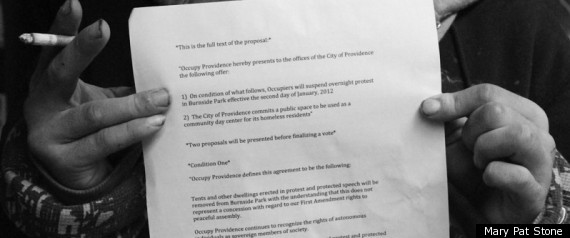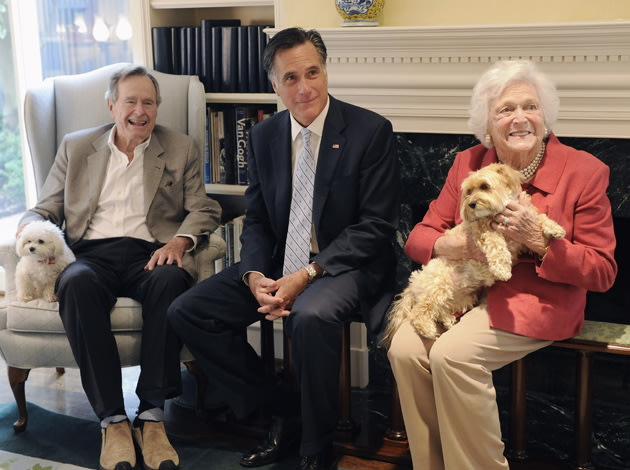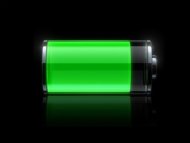 Late on a Saturday night in September, a 14-year old boy named Jamey Rodemeyer, who had been the target of bullying from fellow students at Williamsville North High School in Buffalo New York, took his life. Just hours before he killed himself, Jamey left the last of his numerous messages online talking about the pain he had been dealing with for a long time. Jamey?s suicide was a terrible, extreme reaction to being bullied, and tragically, his was not an unusual case. According to some reports there were as many as 10 teen suicides in the month of September this year, in the United States, that were linked to bullying. Violent reactions by teens to being bullied are not new. It was boys that were bullied and ostracized that committed the high school shootings that plagued the US in the 1990?s. From those mass slaughters to the present day rash of suicides, bullying is taking a violent toll on the youth of America.
Late on a Saturday night in September, a 14-year old boy named Jamey Rodemeyer, who had been the target of bullying from fellow students at Williamsville North High School in Buffalo New York, took his life. Just hours before he killed himself, Jamey left the last of his numerous messages online talking about the pain he had been dealing with for a long time. Jamey?s suicide was a terrible, extreme reaction to being bullied, and tragically, his was not an unusual case. According to some reports there were as many as 10 teen suicides in the month of September this year, in the United States, that were linked to bullying. Violent reactions by teens to being bullied are not new. It was boys that were bullied and ostracized that committed the high school shootings that plagued the US in the 1990?s. From those mass slaughters to the present day rash of suicides, bullying is taking a violent toll on the youth of America.
The response to this crisis in the United States has been efforts at the local, regional and Federal (stopbullying.gov) levels to combat bullying and its impacts. Working groups, task forces and new policies have all been established, with the hopes of halting the spread of the social scourge that is bullying. While it is clear that bullying has become a critical issue both within US schools and the social systems navigated by America?s youth, what is less clear is where its origins lie. It?s easy to get consumed with the impacts and immediate causes of bullying in the US, and to ignore where bullying stems from. However, understanding the origins of bullying is critical. Without the deep understanding the origins of a behavior provide, efforts to prevent bullying will continue to fail.
To understand where bullying comes from, we have to look at the phenomenon on multiple levels. The first step is to define bullying. Bullying is a behavior that is often difficult to measure, but is something that we all think we know when we see it. Many of us have experienced bullying first-hand, and most of us have witnessed it at some point. However, to study any trait or characteristic, we must first define what it is, and bullying is no exception. According to psychological sources, bullying is a specific type of aggression in which (1) the behavior is intended to harm or disturb, (2) the behavior occurs repeatedly over time, and (3) there is an imbalance of power, with a more powerful person or group attacking a less powerful one. This asymmetry of power may be physical or psychological, and the aggressive behavior may be verbal (eg, name-calling, threats), physical (eg, hitting), or psychological (eg, rumors, shunning/exclusion). The key elements of this definition are that multiple means can be employed by the bully or bullies, intimidation is the goal, and bullying can happen on a one-on-one or group basis (Nansel et al, 2001).
Now that we?ve established a definition for bullying, there are two distinct levels of analysis that will shed light on the behavior and its origins. The first level of analysis is to determine if bullying is a cultural phenomenon. In other words, is bullying unique to US society, or is it widespread across different cultures, from different parts of the world? If bullying is widespread and found throughout different societies, we have to consider that it has a deeper origin than present cultural conditions. In short, we can deepen our analysis of the behavior. Bullying is, in fact, widespread and not restricted to American society, but instead is found across the globe (Smith et al, 2002). From hunter/gatherer groups (Boehm, 2000) to post-industrial Japan, bullying is ubiquitous across human cultures.
A 2005 multinational study that spanned 28 countries across North America and Europe revealed how commonplace bullying is and how consistent its effects are (Due et al, 2005). Due et al (2005) used 12 physical and psychological symptoms associated with being bullied to measure the effects of this behavior on the youth in the study. They found that the amount of bullying experienced by kids in those 28 countries varied greatly, with the least severe happening among girls in Sweden and the most severe among boys in Lithuania. However, despite the variation in the amount of bullying, there were no countries where bullying was completely absent. Further, Due et al reported that,
?There was a consistent, strong and graded association between bullying and each of 12 physical and psychological symptoms among adolescents in all 28 countries.? (Due et al, 2005).
No matter where you go in the world, from the Mbuti of Central Africa (Turnbull, 1961) to Suburban children in the United States (Wang et al, 2009) there are individuals and groups that target others with tactics designed to intimidate, coerce or harm them. In some cases bullying is used to maintain social order and ensure that no one acquires too much dominance, status or personal power. In other cases, bullying is harmful and used to injure others physically, emotionally or socially. These scenarios are two sides of the same coin, and one can easily metamorphose into the other if the power dynamics become skewed in one direction or the other. Despite the variation in the amount and intention of bullying across human cultures one thing is clear, bullying is everywhere. The universality of bullying across human societies indicates that this is a species-typical human behavior that has little to do with the cultures people live in. Bullying, it seems is part of our normal behavioral repertoire, it is part of the human condition.
Human universals are important to our understanding of the evolution of behavior in our species (Cosmides & Tooby, 1990). Despite our extensive knowledge of the human fossil record, we can?t directly observe the behaviors of our ancestors. While fossils and ecological reconstructions provide some insights into behavior, modern human and other primates provide important clues as well. When we see modern human behaviors that are universal in nature, it tells us that these behaviors have their origins deep in our evolutionary history. At the very least universal behaviors evolved early on in our species prehistory and they were almost certainly present before humans began migrating around the world and separating into different, sometimes isolated ethnic groups. Bullying is one such behavior. It was there in the hot, seasonal grasslands of southern Africa when the first members of our species took their seminal steps and spoke the original human language, and it has been with us ever since. However, universal behaviors can pre-date a species origin, having been inherited from a previous ancestor. That?s what the next level of analysis can tell us about bullying and its origins.
The second level of analysis is to determine if bullying is unique to our species. To do this, we need to look at whether or not bullying is present in other species. Using the definition provided by above, this is a tall order, because that definition requires knowledge of intentionality. Intentions are difficult to identify in other animals because no matter how many times you ask them why they did something, they don?t answer (at least I?ve never gotten an answer from them). However, if we employ the ?key elements? of bullying as Nansel defines them, we don?t need to know the intentions of individuals, we just have to determine if the purpose of a particular behavior was to intimidate. By using intimidation as our litmus for bullying, we can, at the very least, test for bullying-like behaviors in other animals, including other primates. If other primates engage in bullying-like behaviors, we have to consider the distinct possibility that bullying itself is deeply rooted in our evolutionary history and predates our own species.
When bullying is considered across animals, there is ample evidence that many other animals, including other primates, engage in bullying-like behaviors. Rats and mice are commonly used as models for social stress during different life phases, including adolescence. Studies on these common laboratory rodents indicate that social stress, experienced when one individual repeatedly attacks another or takes resources from them, has immediate and lasting impacts (Kinsey et al, 2007; Vidal et al, 2011). Rats who suffered from bullying-like behaviors were less likely to drink water or consume other resources (Vidal et al, 2011). Mice that suffered repeated social defeats were more anxious and experienced changes in brain chemistry (Kinsey et al, 2007). Bullying-like behaviors extend beyond rodents, and labs, appearing in many species, including other primates.
Bullying-like behaviors are found in every major group of primates, and can sometimes be severe. Among baboons, one of the best-known, non-human primates in the world, bullying-like behaviors are common. Baboons are common throughout sub-Saharan Africa and many species live in female-centered societies that are held together by matrilineal bonds that span multiple generations. Groups of related females work together to compete over resources and in doing so regularly gang up on females from other matrilines (Altmann, 1980). Female baboons have large canines (though nowhere near as large as their male counterparts) and their fights can be intense and, occasionally, dangerous. Females who regularly lose fights and are low ranking are more stressed and have lower reproductive success than their higher-ranking group-mates (Sapolsky, 1987). While female baboons are not always bully-like toward one another, they frequently use intimidation and aggression to modify the behaviors of others and to get resources from them (Seyfarth, 1976).
Bullying-like behaviors are not restricted to female primates. Chimpanzees live in communities with many males and females and males live in the groups their born into their entire lives. Males also form dominance relationships with each other based on physical power and friendships, which they use in competition over mates. Male chimpanzees regularly intimidate each other with bluffs, displays, charges and aggression, which can range from making another male move from a resting spot to physical violence. One of the areas I focus on in my research is the development of behavior in male chimpanzees, paying particular attention to adolescence. Adolescence is a time of great change and uncertainty for male chimpanzees, when they leave their mothers and enter into the adult male social world. When they do that they enter a world of constant posturing and networking that threatens to erupt into violence at any moment. Much like their human cousins, adolescent male chimpanzees begin at the bottom of the male dominance hierarchy (Goodall, 1986) and have to demonstrate their value as a friend and ally, while growing and putting on muscle mass in order to move up the hierarchy. Because adolescent males are smaller, weaker, less experienced and have to challenge other males in order to become competitive, they make attractive targets for older males, and older adolescents and adults regularly attack them (Sherrow, 2008). In short, adolescent males are almost continually bullied as they attempt to join the male social world.
In most cases the bullying-like behaviors experienced by male chimpanzees are temporary and relatively harmless. The most common form of intimidation involves a dominant male puffing himself up, with all of his hair standing on end, and walking toward or by another male. This is usually enough to compel the subordinate, or lower ranking, male to pant grunt (a short ?uhh, uhh, uhh? vocalization which is repeated several times and serves to recognize the dominance of another chimpanzee), don a fear grimace and put their hand out in a palm up begging gesture. However, if two males are close in rank or a male fails to adhere to social norms within the community, bullying-like behaviors can become more intense and, on occasion, dangerous.
One of the reasons bullying-like behaviors can become so dangerous among male chimpanzees is that they regularly gang up on each other during aggressive interactions in what are called coalitions. On three different occasions, researchers at three different field sites, observed coalitions of adult male chimpanzees attack and kill a male from their group, apparently because they did not adhere to the social norms of the community (Fawcett & Muhumza, 2000; Nishida, 1996; Watts, 2004). One case involved the gang attack and killing of an older male, Ntologi, who had been a particularly despotic alpha male of the Mahale M community for years (Nishida, 1996). In two of the cases young adult males who had not formed good friendships within the community, and were highly aggressive toward older males were beaten, bitten, kicked and drug, until their wounds were so severe that they didn?t survive (Fawcett & Muhumza, 2000; Watts, 2004).
On October 29, 2002 David Watts was observing males from the Ngogo chimpanzee community in Kibale National Park in western Uganda, when he observed a gang of adult males attack and kill a young adult male named Grapelli, from their own community. I had spent a lot of time with Grapelli over the previous two years, and had gotten to know him fairly well during that time. He was a striking example of a young male chimpanzee, with distinctive diagonal black markings on a rare, light tan face. He was also one of the biggest, most aggressive chimpanzees at Ngogo and didn?t spend much time with the older, higher ranking males of the community. Instead, Grapelli would go off by himself, for weeks on end, and when he returned he would fight with the other males. Between when Professor Watts left the party of chimpanzees on the night of the 28th and when he caught back up with them on the morning of the 29th, something had snapped in the other males. When he arrived on the scene, the attack was already underway, and a large group of adult males was repeatedly attacking Grapelli, pulling, punching, kicking, dragging and biting him, until he was bloodied and struggling for breath. Grapelli was beaten so badly during the attack that he could barely manage to pull himself into a rudely constructed nest in a low treetop before collapsing. The next day he was missing and it took another eight months before his decomposed body was discovered by two of the Ngogo field assistants.
In all three instances the males that were killed appeared to have broken social rules or norms, and bullying-like behaviors that erupted into violence were used to attempt to get them to conform. Among chimpanzee, and many other primate societies, proper socialization and conformity are critical for maintaining social order and consistency, just as they are in humans. Individuals whose behavior challenges, disrupts or are considered unusual are often the targets of aggression, and that aggression continues until those individuals change their behavior. Bullying-like behaviors are not only present in many primate species, they are often utilized to accomplish the same goals. Bullying-like behaviors are used to enhance an individual or coalition?s competitive ability, or to coerce others into changing their behavior to conform to the rest of the community. Bullying-like behaviors provide the individuals who engage in them with advantages over their targets, through enhanced status or access to resources, or both. If this sounds familiar, it?s because humans use bullying behaviors to achieve the same ends.
The major differences between the bullying-like behaviors so common in other primates and animals and the bullying that is plaguing the young children of the US and other countries are some of the very traits that are hallmarks of humanity. Humans have taken an ancient behavior that used to provide an advantage in survival and reproduction and altered its intensity and impact through language and culture. While physical bullying is a serious issue and targets of bullying are beaten all too often, humans have intensified and expanded the impact of bullying by incorporating language. Language allows us to communicate abstract ideas, coordinate behaviors and express thoughts and feelings to others. Language also allows us to gossip, and gossiping is a key psychological element in bullying and can have serious, lasting effects (Sharp, 1995).
Language, combined with a phenomenal social memory that allows us to remember scores of individuals and their attributes, which we inherited from our primate ancestors, allows bullies to spread rumors about their targets, and inflict harm on them, without putting themselves at risk, physically. Text and online bullying are extensions of this behavior and further remove the bullies themselves from immediate risk. It is not anonymity that texting and online interactions provide, but rather the opportunity for individuals to distance themselves from potential conflict and risk that provides them with a platform to be cruel.
Humans have further altered the impact of bullying-like behaviors through cultural practices and norms that celebrate violence and demand conformity to a narrow view of what is acceptable and normal. In the multi-national study mentioned earlier, the most intensive bullying was found in countries where violence and social intolerance are the most commonplace (Due et al, 2005). In the US, views on violence, sexuality and what is normal impact the actions of our youth, and play on our inherent tendencies to coerce others into conformity. We know that humans are incredibly susceptible to suggestion from authority figures and are willing to commit what would otherwise be considered heinous crimes when directed or encouraged to by authority figures (Milgram, 1974). Still, cultures do not ?create? bullies and bullies are not found only in those cultures that practice social intolerance and glorify violence. The tendency to bully, or coerce, others is natural and deeply rooted in our evolutionary history, and emerges in any group of toddlers playing freely. However, when cultures condone and in some cases celebrate violence and aggression, while suppressing or demonizing aspects of humanity that are equally natural such as homosexuality, they unwittingly give license to and encourage bullies.
Bullying was there during the birth of our species having been inherited from the earliest of our social ancestors. Species ranging from rats to chimpanzees regularly engage in bullying-like behaviors, and those behaviors provide advantages to the individuals who engage in them. However, the combinatory effects of language and culture on bullying in humans have distorted its effects, pushing it beyond individually advantageous to socially venomous. The result has been the crisis we see played out in our schools, shopping malls and social media websites, children and young adults bullying each other with devastating results. While nearly all anti-bullying programs are well-meaning and can show progress in the short term, they fail to get at the root of the problem. Addressing bullying through culturally based social programs is like taking the flowerhead off a milk thistle. You will slow the growth and spread of the plant, but not for long. It is only through incorporating a deeper understanding of the antiquity of a behavior like bullying in our policies that we can hope to alter its impact on society. Like milk thistle, bullying must be pulled up by the root if we hope to remove it from the fields where our children grow and develop.
References:
Altmann, J. 1980. Baboon Mothers and Infants. University of Chicago Press.
Boehm, C. 1999. Hierarchy in the Forest: The Evolution of Egalitarian Behavior, Cambridge: Harvard University Press.
Cosmides, L & Tooby, J. 1990 Evolutionary Psychology: A Primer.
Due, P, Holstein, B, Lynch, J, Diderichsen, F, Gabhain, S, Scheidt, P, Currie, C, and The Health Behaviour in School-Aged Children Bullying Working Group* .2005. Bullying and symptoms among school-aged children: international comparative cross sectional study in 28 countries. European Journal of Public Health, Vol. 15, No. 2, 128?132.
Fawcett, K. & Muhumza, G. 2000. Death of a Wild Chimpanzee Community Member: Possible Outcome of Intense Sexual Competition. American Journal of Primatology 51:243?247.
Goodall, J. 1986. The Chimpanzees of Gombe: Patterns of Behavior. Harvard University Press.
Kinsey, S, Bailey, M, Sheridan, J, Padgett, D, Avitsur, R. 2007. Repeated Social Defeat Causes Increased Anxiety-Like Behavior and Alters Splenocyte Function in C57BL/6 and CD-1 Mice. Brain Behav Immun. May; 21(4): 458?466.
Milgram, S. 1974. Obedience to Authority: An Experimental View. Harper.
Nansel, T, Overpeck, M, Pilla, R, Ruan, WJ, Simons-Morton, B, Scheidt, P. 2001. Bullying Behaviors Among US Youth: Prevalence and Association With Psychosocial Adjustment. JAMA. 2001;285(16):2094-2100.
Nishida, T. 1996. The Death of Ntologi, The Unparalleled Leader of M Group. Pan African News. Vol.3, No.1
Sapolsky, R. M. 1987. Stress, social status, and reproductive physiology in free-living baboons. Psychobiology of reproductive behavior: An evolutionary perspective. In: Psychobiology of reproductive behavior: An evolutionary perspective. Crews, David (Ed), pp. 291-322. Englewood Cliffs, NJ, US: Prentice-Hall, Inc, xii, 350 pp.
Seyfarth, R. 1976. Social relationships among adult female baboons. Animal Behaviour 24, 917-938.
Sharp, S. 1995. How much does bullying hurt? The effects of bullying on the personal wellbeing and educational progress of secondary aged students. Educational and Child Psychology, Vol 12(2), 81-88.
Sherrow, H. M. 2008. Variation in and ontogeny of social behavior in young male chimpanzees (Pan troglodytes schweinfurthii) at Ngogo, Kibale National Park, Uganda. Ph.D. Thesis. Yale University.
Smith, P, Cowie, H, Olafsson, R, & Liefooghe, A. 2002. Definitions of bullying: A comparison of terms used, and age and sex differences, in a 14-country international comparison. Child Development, 73, 1119?1133.
Turnbull, C. 1961. The Forest People. Simon & Schuster.
Vidal, J, Buwalda, B, Koolhaas, J. 2011. Differential long-term effects of social stress during adolescence on anxiety in Wistar and wild-type rats. Behavioural Processes, Volume 87, Issue 2, June 2011, Pages 176-182.
Wang, J, Iannotti, R, Nansel, T. 2009. School Bullying Among Adolescents in the United States: Physical, Verbal, Relational, and Cyber. Journal of Adolescent Health, Volume 45, Issue 4, 368-375.
Watts, D. 2004. Intracommunity coalitionary killing of an adult male chimpanzee at Ngogo, Kibale National Park, Uganda. Int J Primatol 25: 507?521.
Source: http://rss.sciam.com/click.phdo?i=a0aa4563411ce486664862b46cf6878d
rock hill sc kate middleton pregnant national book awards jessica sutta houston astros matt barnes sexiest man alive 2011


 Liza_Harding
Liza_Harding 









 Late on a Saturday night in September, a 14-year old boy named Jamey Rodemeyer, who had been the target of bullying from fellow students at Williamsville North High School in Buffalo New York, took his life. Just hours before he killed himself, Jamey left the last of his numerous messages online talking about the pain he had been dealing with for a long time. Jamey?s suicide was a terrible, extreme reaction to being bullied, and tragically, his was not an unusual case. According to some reports there were as many as 10 teen suicides in the month of September this year, in the United States, that were linked to bullying. Violent reactions by teens to being bullied are not new. It was boys that were bullied and ostracized that committed the high school shootings that plagued the US in the 1990?s. From those mass slaughters to the present day rash of suicides, bullying is taking a violent toll on the youth of America.
Late on a Saturday night in September, a 14-year old boy named Jamey Rodemeyer, who had been the target of bullying from fellow students at Williamsville North High School in Buffalo New York, took his life. Just hours before he killed himself, Jamey left the last of his numerous messages online talking about the pain he had been dealing with for a long time. Jamey?s suicide was a terrible, extreme reaction to being bullied, and tragically, his was not an unusual case. According to some reports there were as many as 10 teen suicides in the month of September this year, in the United States, that were linked to bullying. Violent reactions by teens to being bullied are not new. It was boys that were bullied and ostracized that committed the high school shootings that plagued the US in the 1990?s. From those mass slaughters to the present day rash of suicides, bullying is taking a violent toll on the youth of America.